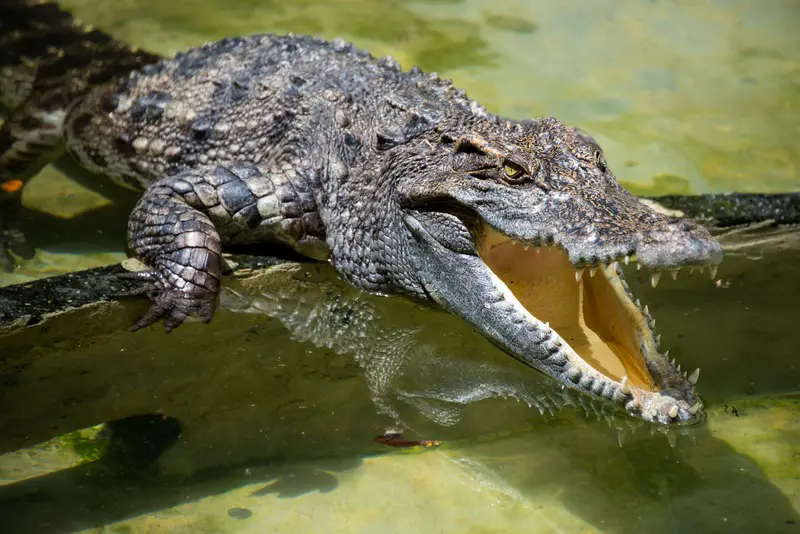A young boy in Indonesia tragically lost his life after a crocodile attacked him while he was playing on a river with friends in the Riau province. Authorities confirmed that the incident occurred on March 21, 2025.
Fikri Qurniawansyah, aged 10, was on a makeshift canoe fashioned from a blue barrel with several friends when the predator struck. Witnesses reported that Fikri had placed his hand in the water just before the crocodile attacked.
Friends of Fikri recounted that the crocodile bit down on his arm, causing the boy to cry out in pain. Despite their efforts to save him by holding onto his other arm, the crocodile managed to pull him off the vessel and vanished with him.
The group returned to their village to alert adults and authorities about the incident. Rescue teams were quickly deployed to search for Fikri.
During the search operation, a crocodile suspected of the attack was located and killed. However, upon examining the contents of the reptile’s stomach, no evidence of the boy was found.
On Tuesday, March 25, a local farmer named Muhammad Nurdin, 37, discovered Fikri’s body floating in the river. The farmer notified the police, who then recovered the body.
A medical examination of Fikri’s remains showed multiple bruises indicative of a “death roll,” a technique used by crocodiles to subdue their prey. Following identification, Fikri’s body was released to his family for burial.
In response to the incident, local police advised residents to be cautious. “If there are any signs of crocodile sightings, please report them to the authorities immediately so that necessary actions can be taken,” the police chief emphasized.
Indonesia is home to 14 species of crocodiles, including large estuarine crocodiles known for their aggressive nature. These reptiles thrive in the region’s climate and can become quite large.
Experts attribute the increase in human-crocodile conflicts to several factors. Overfishing has depleted natural food sources for crocodiles, prompting them to seek alternative sustenance.
Additionally, coastal development for agriculture has encroached on crocodile habitats, pushing them closer to human settlements. Tin mining operations have also contributed by displacing communities into crocodile-inhabited areas.
Environmental researchers note that the loss of habitat due to human activity forces crocodiles into closer proximity with people, reducing their food sources and available territory.
Conservation authorities are collaborating with local communities to implement safety measures and educational programs aimed at reducing future attacks. These initiatives include installing warning signs, designating safe swimming areas, and educating residents about crocodile safety.
The incident involving Fikri is part of a concerning trend of crocodile attacks in Indonesia, according to wildlife officials. Similar incidents have been documented in other regions, underscoring the challenges of human-wildlife conflict amid rapid development.
This situation arises amid ongoing concerns about crocodile management in Southeast Asia, where balancing conservation with public safety remains a complex issue. Wildlife agencies continue to seek solutions that protect both crocodile populations and human communities.











